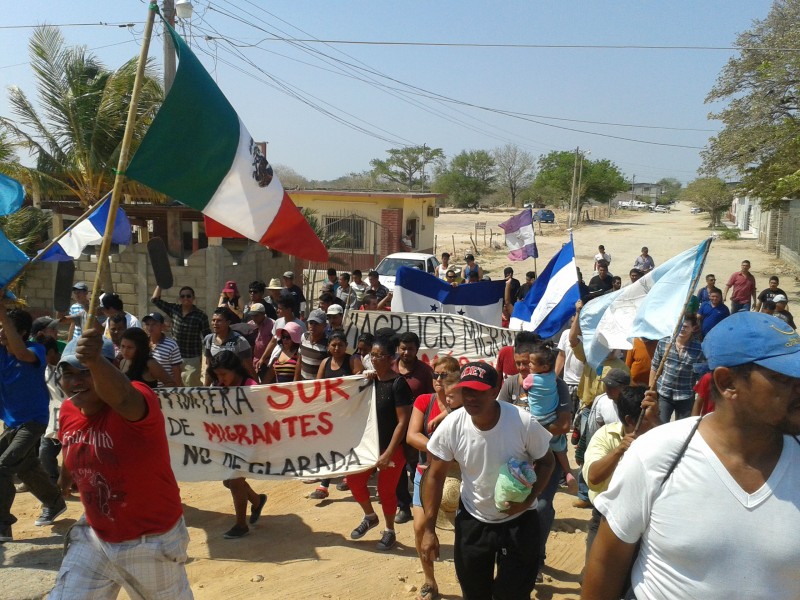
Dispatches, Mexico, United States
Fewer Voices, More Stories; How Thorough Is Coverage of Mexico’s Drug War?
December 8, 2009 By Rachel Brooks-Ames
NEW YORK—With recent shootouts and brutal massacres, drug-related violence in northern Mexico continues to increase in both blood and numbers. Marc Lacey, The New York Times bureau chief for Mexico, sees the worst of it.
“I was standing in blood. It was gruesome,” Lacey said, referring to a recent homicide scene, where seventeen people were executed.
Drug-related murders and disappearances have plagued Mexico for years, but the death toll started climbing markedly in 2006 with the inauguration of president Felipe Calderón. Along with gang members and hapless citizens caught in the crossfire, journalists are also frequent victims of the violence from the drug trade, which is allowed to continue, at least in part, by governmental “impunity,” according to the Committee to Protect Journalists (CPJ).
Whether violence against journalists results from impunity or not, the result is a dangerous climate for those involved in the news industry. Subsequently, Lacey explained, there are “fewer voices in Mexico, fewer people traversing the country to explain what’s going on.”
Violence has targeted not only journalists on the ground, but people higher up in the news industry. In 2008, Alejandro Junco de la Vega, famous for establishing Reforma, Mural, and El Norte, which are the daily papers in Mexico’s three largest cities, fled Mexico because of cartel violence and fears for his safety.
“There’s a dilemma: compromise our editorial integrity, or move my family to a safe location,” said Junco in an issue of Reporte Indigo dated Sept. 18, 2008.
To make matters worse there are fewer people willing to talk about Mexico’s internal battle against the narcotics trade and most who agree to talk insist on pseudonyms.
“Journalists are afraid of naming people, or publishing their photos, or even giving any kind of context for the wars between powerful drug cartels,” said Carlos Lauria from the CPJ.
Roberto Garcia is one of the few exceptions to this general rule. He is a homicide detective in Laredo, Texas and has appeared as a prime source in a number of drug war stories put out over the last year – by organizations including The New York Times, Esquire, CNN, The Dallas Morning News and Details, to name a few.
Jason Buch, who now writes for The San Antonio Express-News, worked as a court reporter for The Laredo Morning Times until a few months ago. In Laredo, stories by large news organization are “sort of a joke in circles of attorneys and federal agents. After a TV or magazine article would come out, it was clear who the source was even if it was anonymous, and the sources were all the same, throughout all organizations,” Buch said.
While large news organizations struggle to locate a variety of reliable sources, small papers like The Laredo Morning Times don’t have the money to generate expository pieces. Small newspapers “don’t pay well, and so they’re not able to bring in experienced reporters, and keep young talent there,” he added
Not surprisingly, this can prevent smaller newspapers from producing high quality stories on complicated issues.
“It took me about a year to start reporting on that [cartel] stuff with any sort of authority,” Buch said. “I didn’t know where to get the information.”
He explained that by the time he understood cartel violence in Laredo well enough to comprehensively report it, and had some reliable sources to back him up, he had outgrown the paper and was moving on.
While the news industry struggles to bring complete stories to the public regarding Mexico’s narco-violence, the Mexican government has problems protecting journalists, and the general citizenry.
One problem is that murder in Mexico, unless committed with a military weapon or obviously linked to organized crime, falls under state jurisdiction, and “in many states in Mexico, corruption is rampant and organized crime has a big penetration into law enforcement,” according to Lauria.
So far it seems the tactic used by the Mexican government in addressing criticisms is refutation. The government has tried to dispel perceptions of violence, within Mexico and internationally.
“President Felipe Calderón has called on national media not to be so negative and he frequently complains that international journalists are exaggerating the dangers in Mexico,” Lacey said.
Whether the Mexican government’s claims are true or not, being a journalist in Mexico right now certainly seems to come with risks and it’s the duty of the government to protect freedom of expression, which is guaranteed in the Mexican Constitution, but is not currently being advocated by those in power, Lauria said.
The CPJ argues that Mexico’s constitution needs to be changed so that murder is acknowledged as a federal offense across the board, he added.
“We hope authorities will find a way to create a safer environment,” said Lauria. “This is an obligation of the Mexican civil government and they are failing in that.”
Between 2006 and 2008 reported drug war-related deaths rose from 1,500 to 5,630. The early months of this year proved to be even deadlier, with 1,000 dead by the end of February, according to The Congressional Research Service.
In the meantime, however, journalists that choose to stay do so in the face of definite risks, and possible retribution. Regardless, for Lacey, the choice was an easy one.
“Why do I stay?” he said. “I’m in the middle of a fascinating story and as a journalist there’s nothing better, even if there are risks.”
Photo (mickou @ Flickr, used under creative commons license): A man reads about a shootout with police that took place in Tequila, in the Mexican state of Jaliso.



